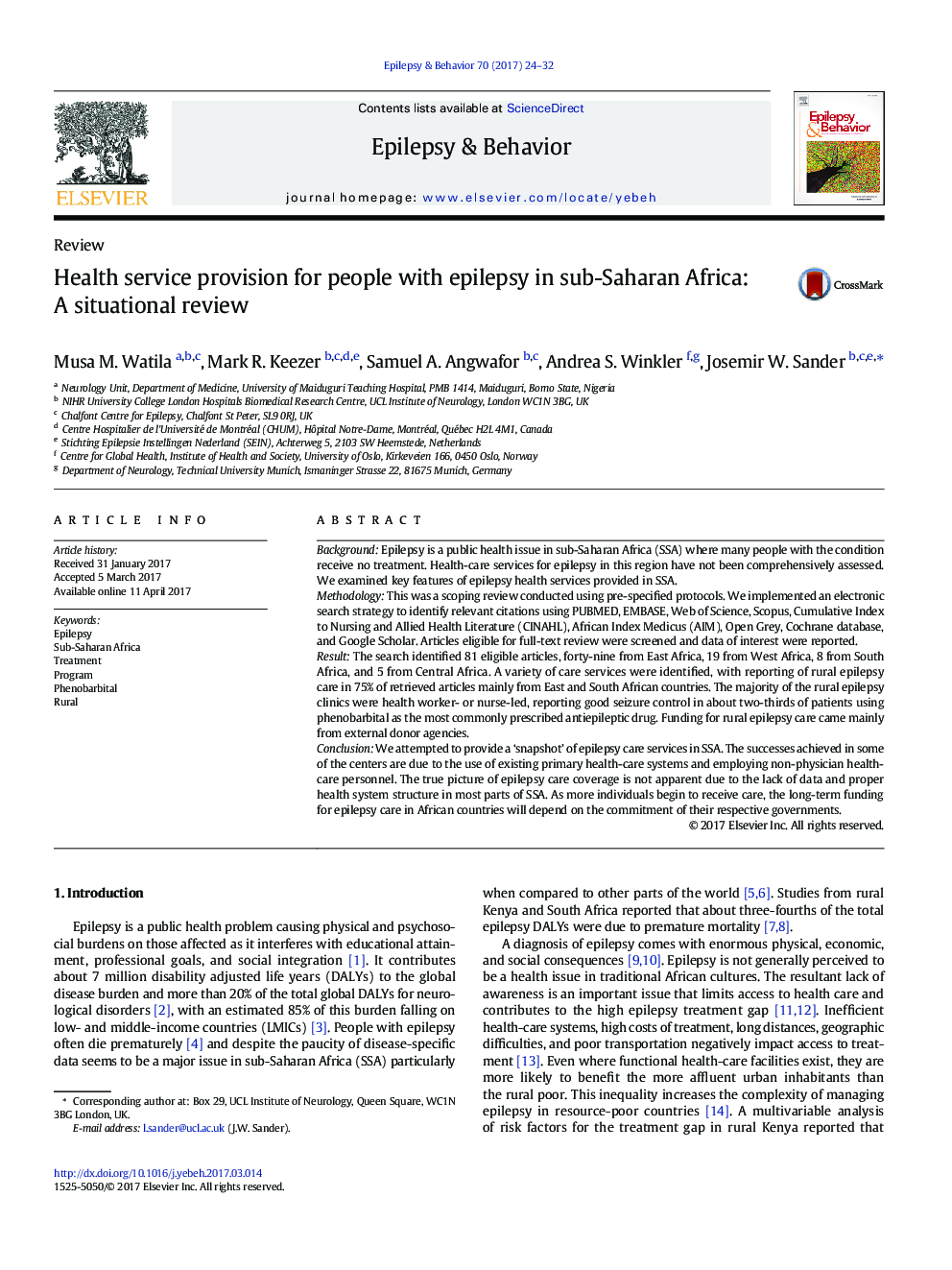| کد مقاله | کد نشریه | سال انتشار | مقاله انگلیسی | نسخه تمام متن |
|---|---|---|---|---|
| 5628278 | 1406370 | 2017 | 9 صفحه PDF | دانلود رایگان |
- Health care provision for people with epilepsy in sub-Saharan Africa.
- The care services identified were mainly rural epilepsy care from East and South Africa.
- Successes were achieved using the existing primary health care systems and employing services of non-physician personnel.
- Phenobarbital is the most commonly prescribed antiepileptic drug, providing seizure-freedom in two-thirds of patients.
- Funding for rural epilepsy care came mainly from external donor agencies.
BackgroundEpilepsy is a public health issue in sub-Saharan Africa (SSA) where many people with the condition receive no treatment. Health-care services for epilepsy in this region have not been comprehensively assessed. We examined key features of epilepsy health services provided in SSA.MethodologyThis was a scoping review conducted using pre-specified protocols. We implemented an electronic search strategy to identify relevant citations using PUBMED, EMBASE, Web of Science, Scopus, Cumulative Index to Nursing and Allied Health Literature (CINAHL), African Index Medicus (AIM), Open Grey, Cochrane database, and Google Scholar. Articles eligible for full-text review were screened and data of interest were reported.ResultThe search identified 81 eligible articles, forty-nine from East Africa, 19 from West Africa, 8 from South Africa, and 5 from Central Africa. A variety of care services were identified, with reporting of rural epilepsy care in 75% of retrieved articles mainly from East and South African countries. The majority of the rural epilepsy clinics were health worker- or nurse-led, reporting good seizure control in about two-thirds of patients using phenobarbital as the most commonly prescribed antiepileptic drug. Funding for rural epilepsy care came mainly from external donor agencies.ConclusionWe attempted to provide a 'snapshot' of epilepsy care services in SSA. The successes achieved in some of the centers are due to the use of existing primary health-care systems and employing non-physician health-care personnel. The true picture of epilepsy care coverage is not apparent due to the lack of data and proper health system structure in most parts of SSA. As more individuals begin to receive care, the long-term funding for epilepsy care in African countries will depend on the commitment of their respective governments.
Journal: Epilepsy & Behavior - Volume 70, Part A, May 2017, Pages 24-32
